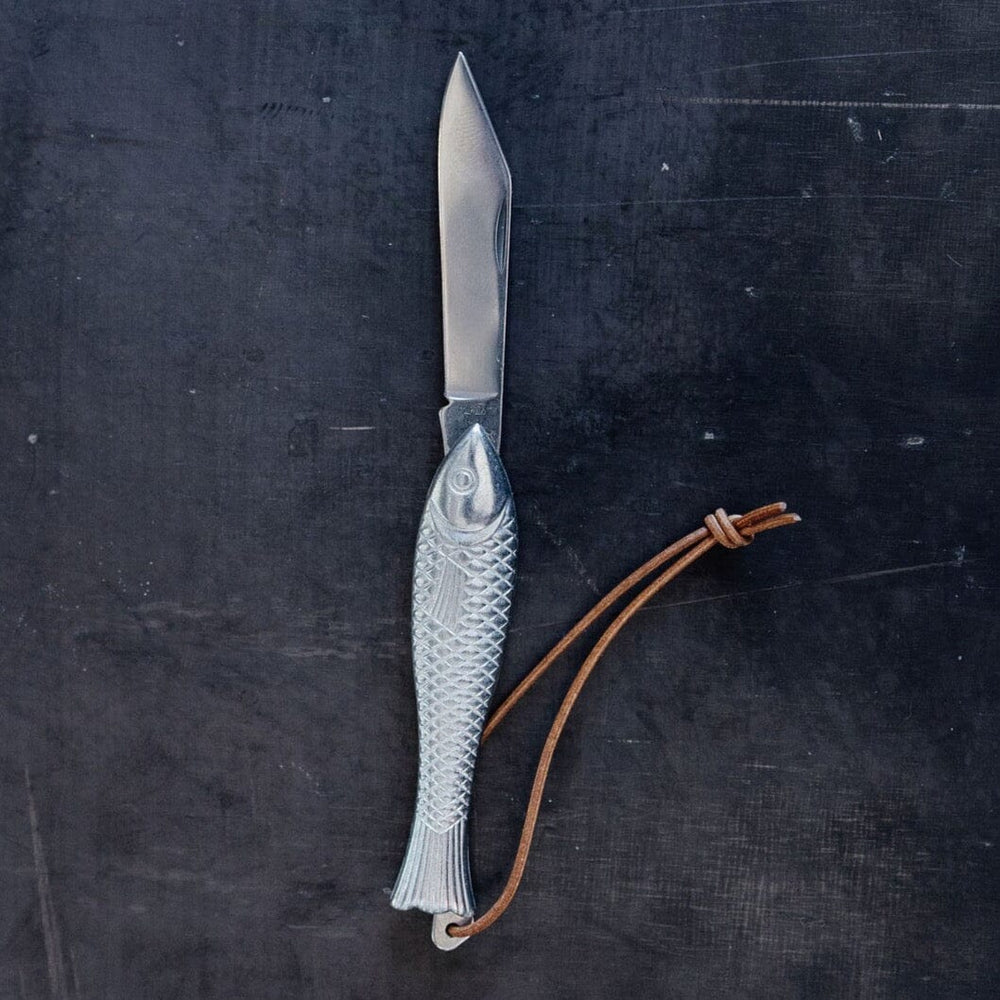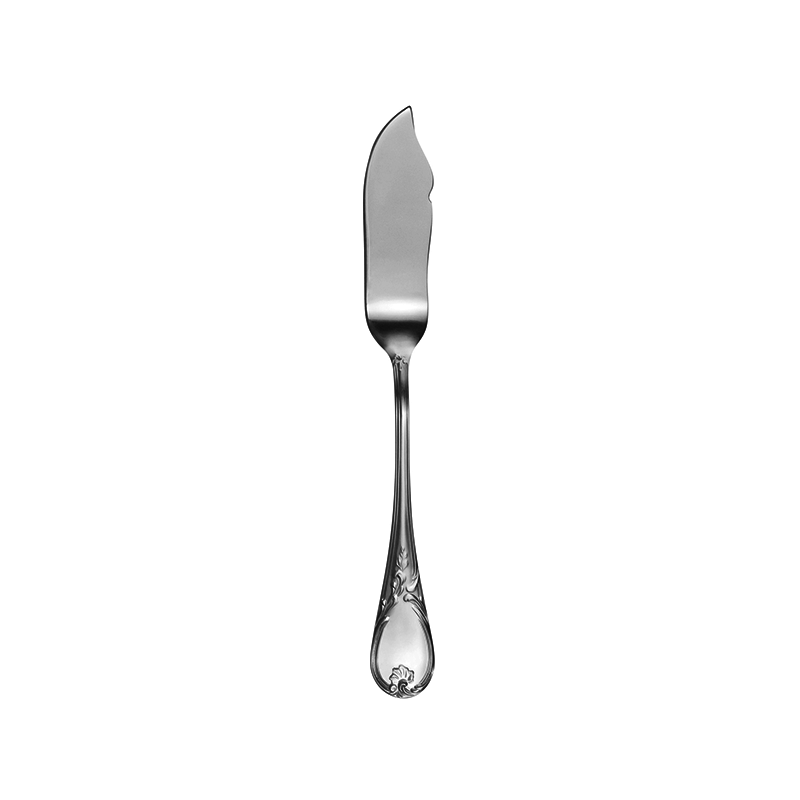How much should you spend on a good fish knife?
Discover the Vital Attributes to Seek in a Top-Quality Fish Knife
When selecting a fish knife, numerous key functions require attention. The blade material significantly impacts toughness and sharpness, while versatility plays an essential function in precision. Additionally, the take care of design influences comfort throughout expanded usage. Edge retention and safety and security attributes are likewise vital for sensible usage. Comprehending these elements will assist consumers towards making an enlightened selection, yet the subtleties of their relevance may not be promptly clear.
Blade Material and Building And Construction
The effectiveness of a fish knife mostly depends upon its blade material and building and construction - fish knife. Premium fish blades normally feature blades made from stainless steel, high-carbon steel, or a combination of both. Stainless steel is favored for its deterioration resistance and reduced upkeep, making it perfect for freshwater and deep sea atmospheres. High-carbon steel, while vulnerable to rusting, supplies remarkable intensity and edge retention, attracting those that prioritize cutting efficiency
The building and construction of the blade likewise plays a crucial role in its efficiency. Full-tang blades, which prolong the entire length of the deal with, offer enhanced toughness and balance. On the other hand, partial-tang blades might jeopardize sturdiness. Furthermore, the thickness of the blade should be considered, as thinner blades enable more accurate cuts, essential for delicate fish filleting. Eventually, a sound blade, making use of the ideal materials, is essential for accomplishing the finest results when preparing fish.
Blade Versatility and Size
Blade adaptability and size are critical variables that substantially influence the efficiency of a fish knife. An adaptable blade permits accurate cuts and the ability to steer around bones and skin, making it essential for filleting fish effectively. The ideal quantity of adaptability can improve control, enabling the user to accomplish clean, smooth cuts with minimal effort.
In terms of size, fish blades usually range from 6 to 9 inches. A longer blade is helpful for bigger fish, giving the reach required for effective filleting. Alternatively, a shorter blade provides ability to move, making it ideal for smaller fish or detailed tasks.
Ultimately, the option of versatility and length should straighten with the details fishing needs and choices of the customer. A healthy mix of these qualities ensures optimum efficiency, boosting the general fish preparation experience.
Take Care Of Layout and Convenience
A well-designed manage is necessary for making certain convenience and control when making use of a fish knife. The take care of should fit firmly in the hand, permitting for a company hold throughout complex tasks such as filleting or skinning fish. Products like rubber, timber, or composite provide various degrees of convenience and traction, affecting the user's experience.
Ergonomic functions are additionally vital; shapes that comply with the all-natural shape of the hand can decrease tiredness throughout extended usage. In addition, the deal with's structure plays a substantial function in avoiding slippage, particularly when functioning with damp hands.
Weight circulation is one more factor that contributes to the total equilibrium of the knife, enhancing ability to move. A comfortable deal with layout not just improves effectiveness however additionally advertises safety and security, as a safe and secure hold minimizes the threat of mishaps (fish knife). Inevitably, a thoughtful take care of design can substantially raise the effectiveness of a fish knife in culinary applications
Side Retention and Sharpening
While making use of a fish knife, keeping a sharp edge is vital for attaining clean cuts and accurate filleting. A quality fish knife need to exhibit outstanding side retention, enabling it to remain sharp with several uses. This characteristic is commonly determined by the sort of steel utilized in the blade; high-carbon stainless-steel is often favored due to its balance of hardness and rust resistance.

Security Attributes and Sheath Options
When picking a fish knife, numerous security functions and sheath options are vital factors to consider. An ergonomic and safe deal with minimizes the threat of slides during usage, enhancing individual safety. Distinctive holds and finger guards better prevent mishaps, permitting for much better control while filleting fish.
Furthermore, a blunt suggestion can minimize the danger of puncture injuries, making it a safer option for newbie customers.
Sheath options additionally play an essential duty in safety. A properly designed sheath protects the blade, protecting against unintentional cuts when the knife is saved or transferred. Sheaths made from resilient products, such as nylon or hard plastic, deal added security versus environmental components.
Some sheaths feature belt clips or loops, making certain the knife is easily accessible while staying protected. Eventually, focusing on safety and security functions and sheath options contributes considerably to the total performance and customer experience of a fish knife.
Frequently Asked Concerns
What Is the very best Brand for Fish Blades?
The finest brand name read more for fish blades usually varies by choice, but renowned names like Wüsthof, Victorinox, and Avoid are often recommended for their sharpness, workmanship, and longevity, making them leading selections amongst cooking fanatics and professionals alike.
Can Fish Knives Be Made Use Of for Various Other Sorts Of Fish?
Fish blades can undoubtedly be used for other types of fish. Their design and intensity make them flexible enough for various fish types, improving the total experience of filleting and preparing various sorts of seafood.

Exactly how Do I Tidy and Keep My Fish Knife?
To maintain a fish and clean knife, wash it with cozy water after use, carefully scrub with moderate soap, dry thoroughly, and store in a safety sheath to avoid damages and corrosion. Normal developing is crucial.
Exist Fish Knives Especially for Left-Handed Users?
Yes, there are fish blades developed especially for left-handed individuals. These blades include reversed blade angles and ergonomic deals with, guaranteeing comfort and efficiency for left-handed individuals while filleting and preparing fish. Quality options are offered from numerous suppliers.
What Is the Rate Range for Quality Fish Knives?
Quality fish knives generally vary from $20 to $150, relying on materials, brand online reputation, and workmanship. Higher-end choices might feature specialized styles and superior functional designs, while budget-friendly selections still provide satisfactory efficiency for laid-back users.
The effectiveness of a fish knife mostly hinges on its blade material and building and construction. High-grade fish blades generally include blades made from stainless steel, high-carbon steel, or a mix of both. Blade flexibility and length are crucial variables that greatly influence the performance of a fish knife. Fish blades can certainly be utilized for other kinds of fish. These knives feature reversed blade angles and ergonomic handles, ensuring comfort and efficiency for left-handed individuals while filleting and preparing fish.